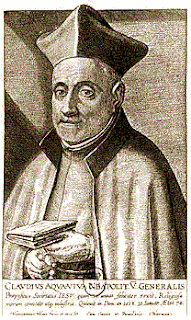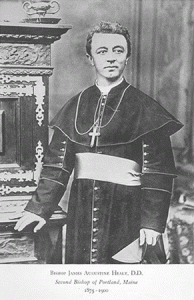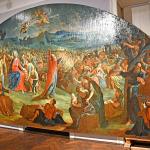Today marks the death Claudio Acquaviva (1543-1615), fifth General of the Society of the Society of Jesus (and the longest reigning one to date). The son of a nobleman, he studied law before becoming a priest. In 1567, he joined the Jesuits, where his administrative ability was quickly utilized. After serving as provincial in Naples and in Rome, he was elected Superior General in 1581 at age 37. It was during his generalate that the Ratio Studiorum (1599) was promulgated. This document, known as the “Magna Charta of Jesuit education,” met the need for a comprehensive plan of studies to be used as a guide in Jesuit schools. Father John O’Malley writes: “In the Middle Ages, the Augustinians had a document known as Ratio studiorum, and other orders had similar documents which were intended for the training of members of the orders. The Ratio of the Jesuits was different in that it was meant as much for the education of lay students as for Jesuits, but it also was different because the “plan of studies” now included the humanities — literature, history, drama, and so forth — as well as philosophy and theology, the traditionally clerical subjects. This meant that the Jesuit Ratio assumed that literary or humanistic subjects could be integrated into the study of professional or scientific subjects; that is, it assumed that the humanistic program of the Renaissance was compatible with the Scholastic program of the Middle Ages.” During Acquaviva’s tenure, the number of Jesuits rose from 5,000 to 13,000, with 550 houses and fifteen provinces.












